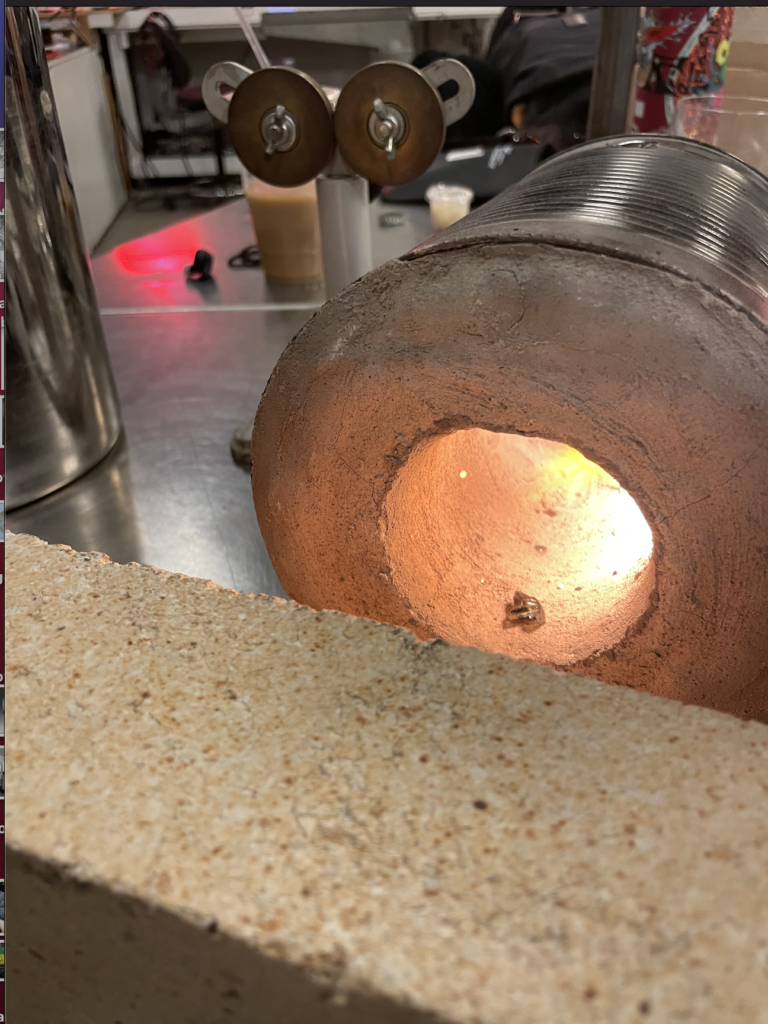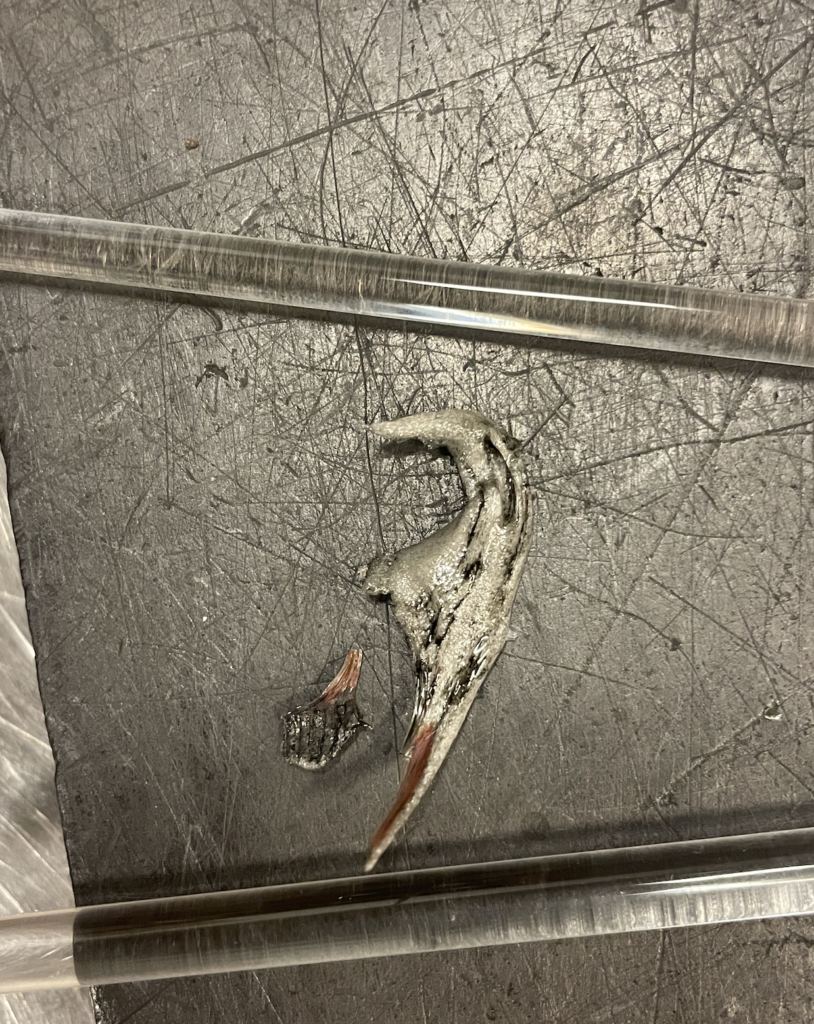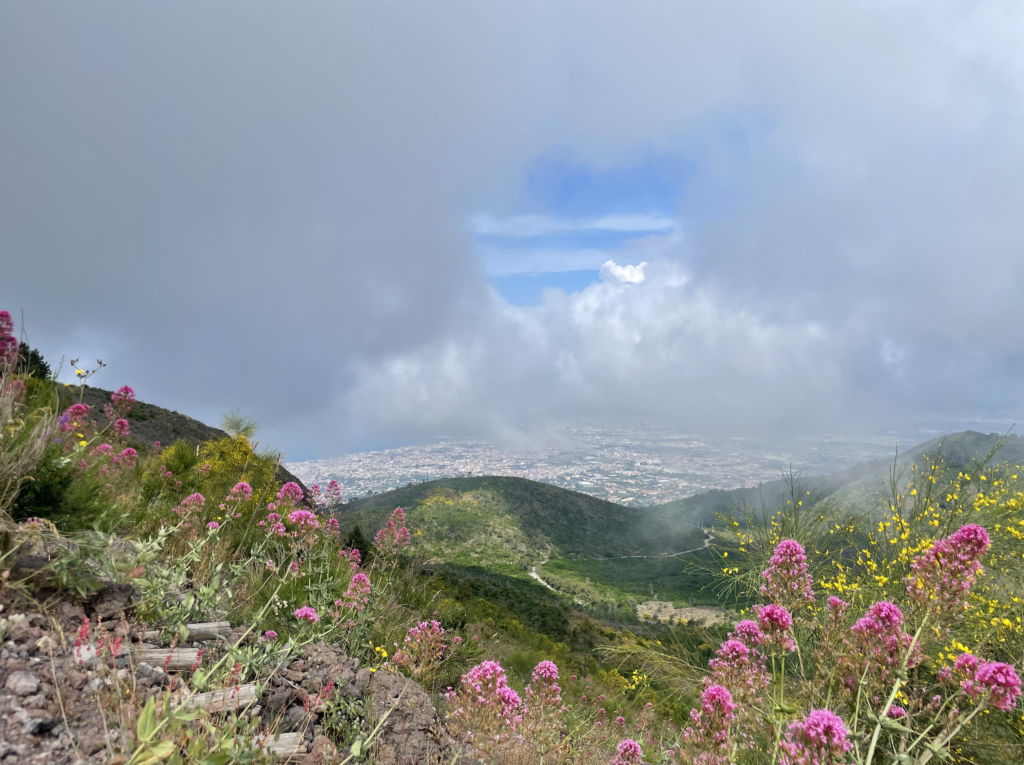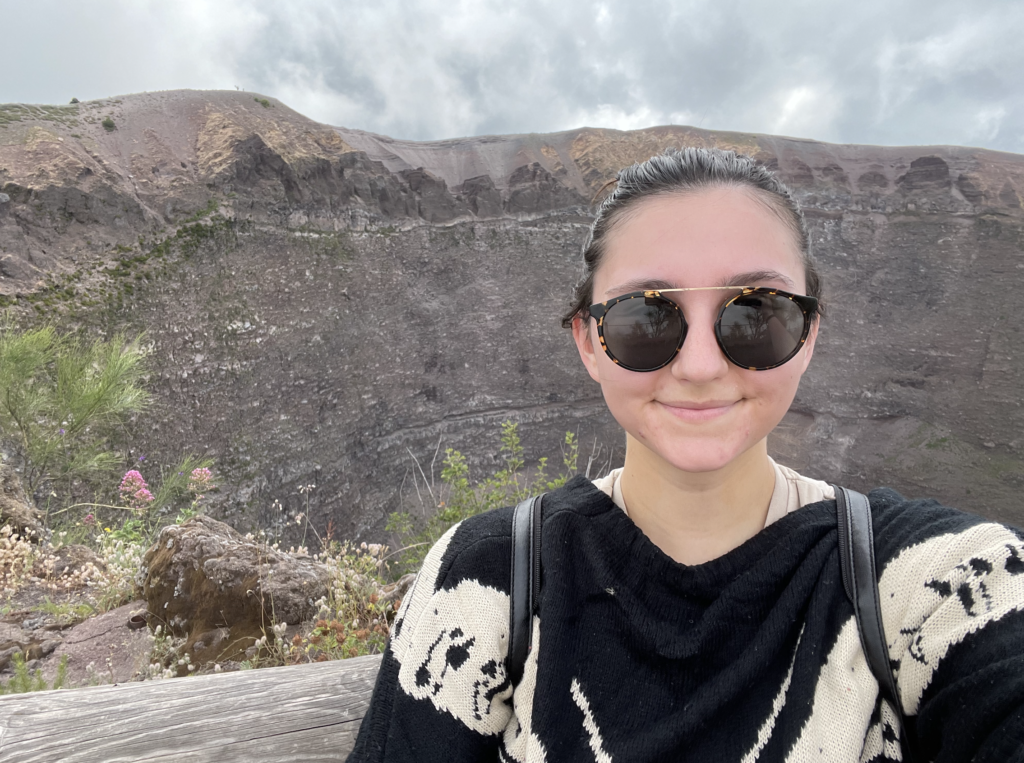This month has brought about an intense amount of learning and growth with my research. I melted and stretched obsidian which gave me hope about glassworking with obsidian in the future if we had more powerful torches and furnaces. This has led me to believe that obsidian as a glass to work with is likely more similar to quartz based on research and discussing the way it acts with my mentors. I, unfortunately, have no experience with quartz, and it is incredibly expensive. Many of its applications are for military (nuclear waste/fallout containments) and space-related (windows/lenses of spacecraft and telescopes). While I thought that borosilicate would be similar to obsidian, my hypothesis was wrong. Because my hypothesis was wrong, I have been pivoting with what kind of art I would want to make with obsidian, and adjusting my expectations for project ideas that I can complete in the future. But, this also makes me wonder whether some hybrid glass of obsidian and quartz could be used for these scientific applications, or even artistic ones too. As technology improves for space-related endeavors and beyond, I am wondering if this kind of experimentation could be useful/an important part of “what’s next”. This project has made me feel like more of a scientist than an artist in this way. I will push myself over the next month to try to see myself as both and generate ideas for a final project that can combine all of these ideas, and become a scientist-artist and/or an artist-scientist.


Outside of the lab, I had an incredible opportunity to do some field research at Campi Flegrei in Naples, climb Vesuvius, and see Pompeii in Italy while visiting family and friends for my mom’s birthday. Seeing these volcanoes, art generated from this experience, and seeing the remains of those lost has made obsidian and volcanism have more real-world consequences. I reflected upon how tragic the explosions and eruptions of Vesuvius were for history, yet, at the same time, it is full of vegetation and fertile soil now. The latest lava flow, from 1944 has only recently started to blossom, which gives me hope that working with volcanic materials (beyond just obsidian) for art can create interesting and ever-changing sculptures/land art. Additionally, at the Solfatara, a location that used to be accessible to the public but has been closed due to fatalities from sulfur gas, we witnessed the rocks degassing. This is similar to the degassing process I have been doing with obsidian on a larger scale, and this area releases sulfur, rather than water, which makes it toxic to humans.


